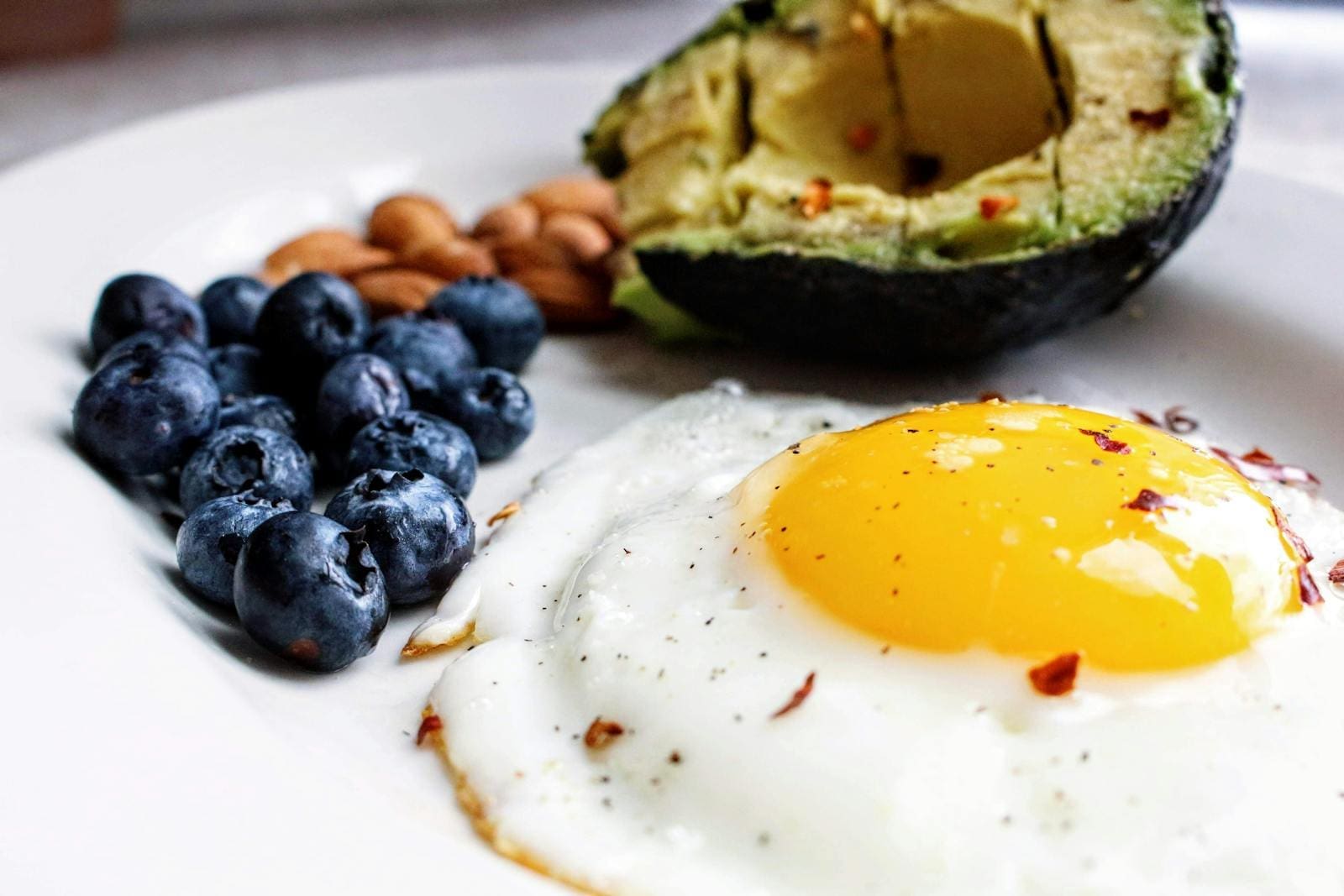Many ask for an easy Keto Diet Beginner Guide for optimal health and weight loss management. Here is my take!
The keto diet has gained significant popularity in recent years as a way to lose weight and improve overall health. This low-carb, high-fat diet has been praised for promoting weight loss, increasing energy levels, and improving mental clarity. However, before embarking on the keto journey, it is important to understand the basics of this diet and how it works. By understanding the science behind ketosis and the types of foods to eat and avoid, individuals can make informed decisions about whether the keto diet is right for them.
Keto Diet Beginner Guide Key Takeaways
- The Keto Diet is a low-carb, high-fat diet that puts your body into a state of ketosis.
- Benefits of the Keto Diet include weight loss, improved blood sugar control, and increased energy levels.
- On the Keto Diet, foods to eat include meat, fish, eggs, low-carb vegetables, and healthy fats, while foods to avoid include grains, sugars, and processed foods.
- Meal planning and preparation are important for success on the Keto Diet, and incorporating exercise can enhance results.
- Common challenges on the Keto Diet include the “Keto flu” and social situations, but these can be overcome with proper planning and support.
Understanding the Basics of the Keto Diet
The keto diet is based on the principle of ketosis, a metabolic state in which the body burns fat for fuel instead of carbohydrates. Normally, the body relies on glucose from carbohydrates as its primary source of energy. However, when carbohydrate intake is restricted, the body begins to break down stored fat into molecules called ketones, which are then used as fuel.
There are several types of keto diets, including the standard ketogenic diet (SKD), which involves consuming 75% fat, 20% protein, and 5% carbohydrates; the cyclical ketogenic diet (CKD), which involves cycling between periods of high-carb and low-carb eating; and the targeted ketogenic diet (TKD), which allows for small amounts of carbohydrates around workouts.
The benefits of the keto diet extend beyond weight loss. Research has shown that this diet can improve blood sugar control, reduce inflammation, increase weight loss, and improve brain function. By understanding these benefits, individuals can decide whether the keto diet is right for them.
Benefits of the Keto Diet for Health and Weight Loss
One of the main benefits of the keto diet is improved blood sugar control. Individuals can stabilize their blood sugar levels and reduce insulin resistance by reducing carbohydrate intake and increasing fat consumption. This can be particularly beneficial for individuals with type 2 diabetes or prediabetes.
In addition, the keto diet has been shown to reduce inflammation in the body. Chronic inflammation is linked to a variety of health conditions, including heart disease, cancer, and autoimmune disorders. By reducing carbohydrate intake and increasing fat consumption, individuals can lower their levels of inflammation and improve overall health.
Another benefit of the keto diet is increased weight loss. When the body is in a state of ketosis, it becomes more efficient at burning fat for fuel. This can lead to significant weight loss, particularly in individuals who are overweight or obese. Additionally, the keto diet has been shown to reduce appetite and increase feelings of fullness, which can further support weight loss efforts.
Finally, the keto diet has been shown to improve brain function. The brain relies on glucose for energy, but it can also use ketones as an alternative fuel source. By following a keto diet, individuals can provide their brains with a steady supply of ketones, which may improve cognitive function and protect against neurodegenerative diseases.
Foods to Eat and Avoid on the Keto Diet Beginner Guide
| Foods to Eat | Foods to Avoid |
|---|---|
| Meat (beef, pork, lamb, chicken, turkey) | Bread and grains (wheat, rice, oats, corn) |
| Fish and seafood (salmon, tuna, shrimp) | Sugar (sweets, candy, soda) |
| Eggs | Fruit (bananas, apples, oranges) |
| Low-carb vegetables (spinach, broccoli, cauliflower) | Processed foods (chips, crackers, fast food) |
| Healthy fats (avocado, olive oil, nuts) | High-carb vegetables (potatoes, corn, carrots) |
When following the keto diet, it is important to focus on consuming foods that are high in healthy fats and low in carbohydrates. Some examples of keto-friendly foods include:
- Avocados
- Olive oil
- Coconut oil
- Butter in small quantities, I prefer ghee which contains less carbs.
- Nuts and seeds
- Fatty fish (such as salmon and sardines)
- Meat and poultry
- Eggs
- Non-starchy vegetables (such as spinach, kale, and broccoli)
On the other hand, there are several foods that should be avoided on the keto diet due to their high carbohydrate content. These include:
- Grains (such as wheat, rice, and oats)
- Legumes (such as beans and lentils)
- Sugar (including both natural and added sugars)
- Fruit (with the exception of small amounts of berries)
- Starchy vegetables (such as potatoes and corn)
- Processed foods (which often contain hidden sugars and carbohydrates)
In addition to focusing on the types of foods to eat and avoid, it is also important to track macronutrients (carbohydrates, protein, and fat) to ensure that the body is in a state of ketosis. This can be done through the use of food-tracking apps or by consulting with a registered dietitian who knows and understands the ketogenic diet.
Meal Planning and Preparation for the Keto Diet
Meal planning in this Keto diet beginner guide is essential to the ketogenic diet. By planning meals in advance, individuals can ensure they have keto-friendly options and avoid making impulsive food choices that may derail their progress.
When meal planning for the keto diet, it is important to focus on incorporating a variety of healthy fats, moderate amounts of protein, and low-carbohydrate vegetables. Some tips for successful meal prep on the keto diet include:
- Preparing meals in bulk: Cook large batches of keto-friendly meals and portion them out into individual containers for easy grab-and-go options throughout the week.
- Stocking up on keto-friendly snacks: Keep a supply of keto-friendly snacks on hand, such as nuts, seeds, and cheese, to prevent reaching for high-carb options when hunger strikes.
- Experimenting with new recipes: The keto diet does not have to be boring. Try out new recipes that incorporate a variety of flavors and textures to keep meals interesting and enjoyable.
Here is a sample meal plan for this Keto Diet Beginner Guide:
- Breakfast: Scrambled eggs cooked in butter with avocado slices and bacon.
- Lunch: Grilled chicken salad with mixed greens, cherry tomatoes, cucumbers, and olive oil dressing.
- Snack: Handful of almonds.
- Dinner: Baked salmon with roasted Brussels sprouts and cauliflower rice.
- Dessert: Keto-friendly chocolate mousse made with heavy cream, cocoa powder, and a sugar substitute.
Tips for Staying on Track with the Keto Diet

Staying on track with the keto diet can be challenging, especially when faced with social situations or cravings for high-carb foods. However, there are several strategies that can help individuals stay committed to their goals.
One important tip for staying on track with the keto diet is to find an accountability partner. This could be a friend, family member, or coworker who is also following the keto diet. By checking in with each other regularly and providing support and encouragement, individuals can stay motivated and accountable to their goals.
Eating out can also be a challenge on the keto diet, as many restaurant meals are high in carbohydrates. However, there are several strategies that can help individuals make keto-friendly choices when dining out. Some tips for eating out on the keto diet include:
- Researching the menu in advance: Look up the menu online before going to a restaurant to identify keto-friendly options.
- Asking for modifications: Don’t be afraid to ask for substitutions or modifications to make a meal more keto-friendly. For example, ask for a burger without the bun or request extra vegetables instead of rice or potatoes.
- Bringing your own snacks: If you’re unsure if keto-friendly options will be available, bring your own snacks to ensure that you have something to eat.
- …
In addition to focusing on food choices, it is also important to prioritize self-care when following this Keto Diet Beginner Guide. This includes getting enough sleep, managing stress levels, and engaging in activities that bring joy and relaxation. Taking care of oneself holistically can support overall health and well-being while following the keto diet.
Common Challenges and How to Overcome Them on the Keto Diet
While the keto diet has many benefits, it is not without its challenges. One common challenge that individuals may face when starting the keto diet is the “keto flu.” This is a collection of symptoms that can occur during the first few days or weeks of transitioning into ketosis. Symptoms may include fatigue, headache, irritability, and nausea. However, these symptoms are temporary and can be alleviated by staying hydrated, increasing electrolyte intake, and gradually reducing carbohydrate intake.
Social pressure is another challenge for the Keto Diet Beginner Guide that individuals may face on the keto diet. It can be difficult to stick to a specific eating plan when surrounded by friends or family members who are not following the same diet. In these situations, it is important to communicate your dietary needs and goals to those around you. Additionally, bringing your own keto-friendly dishes to social gatherings or suggesting keto-friendly restaurants can help ensure that you have options that align with your dietary preferences.
Plateaus are another common challenge that individuals may face on the keto diet. After initial weight loss, it is common for progress to slow down or stall completely. This can be frustrating, but it is important to remember that weight loss is not always linear. To overcome plateaus, individuals can try adjusting their macronutrient ratios, increasing physical activity levels, or incorporating intermittent fasting into their routines.
Incorporating Exercise into Your Keto Diet Beginner Guide
Exercise is an important component of any healthy lifestyle, and it can be particularly beneficial when combined with the keto diet. Regular physical activity can help support weight loss efforts, improve cardiovascular health, increase muscle mass, and boost overall well-being.
When incorporating exercise into a keto diet plan, choosing activities that align with individual preferences and goals is important. Some types of exercise that are well-suited for the keto diet include:
- Strength training: Lifting weights or using resistance bands can help build lean muscle mass and increase metabolism.
- High-intensity interval training (HIIT) involves short bursts of intense activity followed by rest or lower-intensity periods. HIIT workouts can be effective for burning calories and improving cardiovascular fitness.
- Low-intensity steady-state (LISS) cardio: Activities such as walking, swimming, or cycling at a moderate pace can help burn calories and improve cardiovascular health without placing excessive stress on the body.
When starting an exercise routine on this keto diet beginner guide or any diet, it is important to start slowly and gradually increase intensity and duration. It is also important to listen to your body and rest when needed.
Staying hydrated and replenishing electrolytes is crucial, as the keto diet can increase fluid loss.
Tracking Progress and Adjusting Your Keto Diet as Needed
Tracking progress is an important aspect of any diet or lifestyle change. By monitoring changes in weight, body measurements, energy levels, and overall well-being, individuals can assess the effectiveness of their keto diet plan and make adjustments as needed.
Some signs that adjustments may be needed include:
- Stalled weight loss: If weight loss has plateaued for an extended period of time, it may be necessary to adjust macronutrient ratios or caloric intake.
- Lack of energy: If energy levels are consistently low or workouts are suffering, it may be necessary to increase carbohydrate intake slightly to provide additional fuel for physical activity.
- Poor sleep quality: If sleep quality has declined since starting the keto diet, it may be necessary to adjust macronutrient ratios or meal timing to support better sleep.
When making adjustments to a keto diet plan, it is important to do so gradually and monitor how the body responds. Consulting with a registered dietitian or healthcare professional can provide guidance and support during this process.
Combining the Keto Diet with Intermittent Fasting for Enhanced Results
Intermittent fasting is a dietary approach that involves cycling between periods of fasting and eating. This eating pattern has gained popularity in recent years for its potential health benefits, including improved insulin sensitivity, increased fat burning, and reduced inflammation.
When combined with the keto diet, intermittent fasting can enhance the benefits of both approaches. By restricting carbohydrate intake and extending the fasting period, individuals can enter into a deeper state of ketosis and potentially accelerate weight loss.
There are several different methods of intermittent fasting, including the 16/8 method (fasting for 16 hours and eating within an 8-hour window), alternate-day fasting (fasting every other day), and the 5:2 method (eating normally for 5 days and restricting calories for 2 days).
When starting intermittent fasting, it is important to listen to your body and adjust the fasting and eating windows as needed. It is also important to stay hydrated and consume adequate nutrients during eating periods to support overall health.

Frequently Asked Questions About the Keto Diet Beginner Guide
Is the keto diet safe?
The keto diet is generally considered safe for most individuals. However, it may not be suitable for everyone, particularly those with certain medical conditions or dietary restrictions. It is important to consult with a healthcare professional before starting any new diet or lifestyle change.
Can I eat fruit on the keto diet?
Fruit is generally limited on the keto diet due to its high carbohydrate content. However, small amounts of berries, such as strawberries or blueberries, can be incorporated into a keto diet plan in moderation.
How long does it take to enter ketosis?
The time it takes to enter ketosis can vary from person to person. Generally, it takes about 2-7 days of restricting carbohydrates to enter into a state of ketosis.
Can I drink alcohol on the keto diet?
Alcohol can be consumed in moderation on the keto diet, but it is important to choose low-carb options. Hard liquors such as vodka, whiskey, and tequila are typically low in carbohydrates.
Will I regain weight after stopping the keto diet?
Weight regain can occur after stopping the keto diet if individuals return to their previous eating habits. It is important to transition out of the keto diet gradually and focus on maintaining a balanced, healthy eating plan.
The keto diet can be a powerful tool for improving health and achieving weight loss goals. By understanding the basics of the keto diet, individuals can make informed decisions about whether this dietary approach is right for them.
By focusing on consuming healthy fats, moderate amounts of protein, and low-carbohydrate vegetables, individuals can enter into a state of ketosis and experience the many benefits that the keto diet has to offer. With proper meal planning, self-care, and tracking progress, individuals can stay on track with the keto diet and achieve their desired results.
If you’re just starting out on the keto diet and looking for some delicious breakfast options, you’ll definitely want to check out this article on keto breakfast cups. These tasty cups are not only easy to make but also packed with all the essential nutrients to keep you energized throughout the day. And if you’re wondering whether smoothies can be a part of your keto journey, this article on the smoothie diet will provide you with all the information you need. I
f you’re curious about how a low-carb diet works and its benefits, this article on the low-carb diet will give you a comprehensive understanding. So, whether you’re looking for breakfast ideas or want to explore different aspects of the keto diet, these articles will be a great resource for beginners.









Comments are closed.